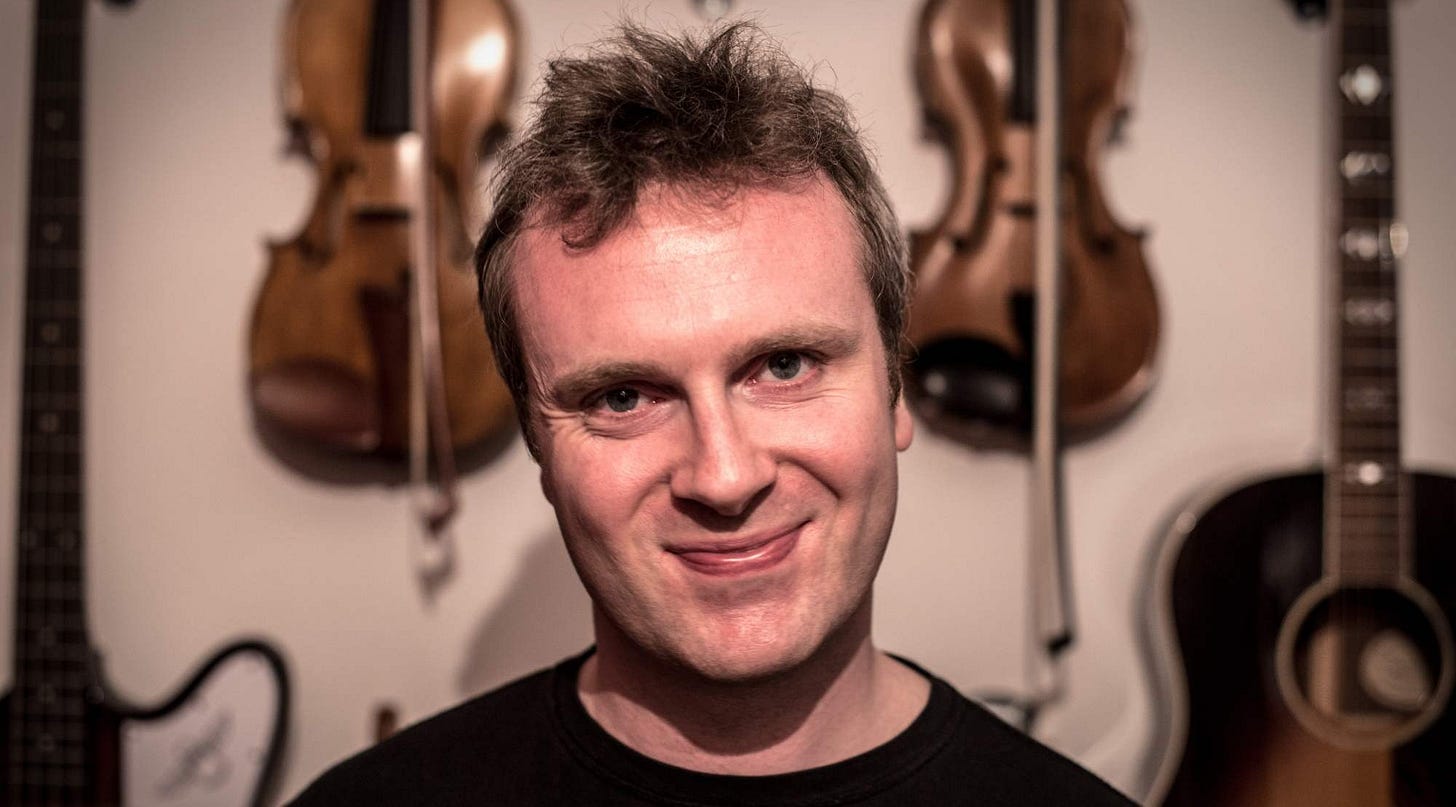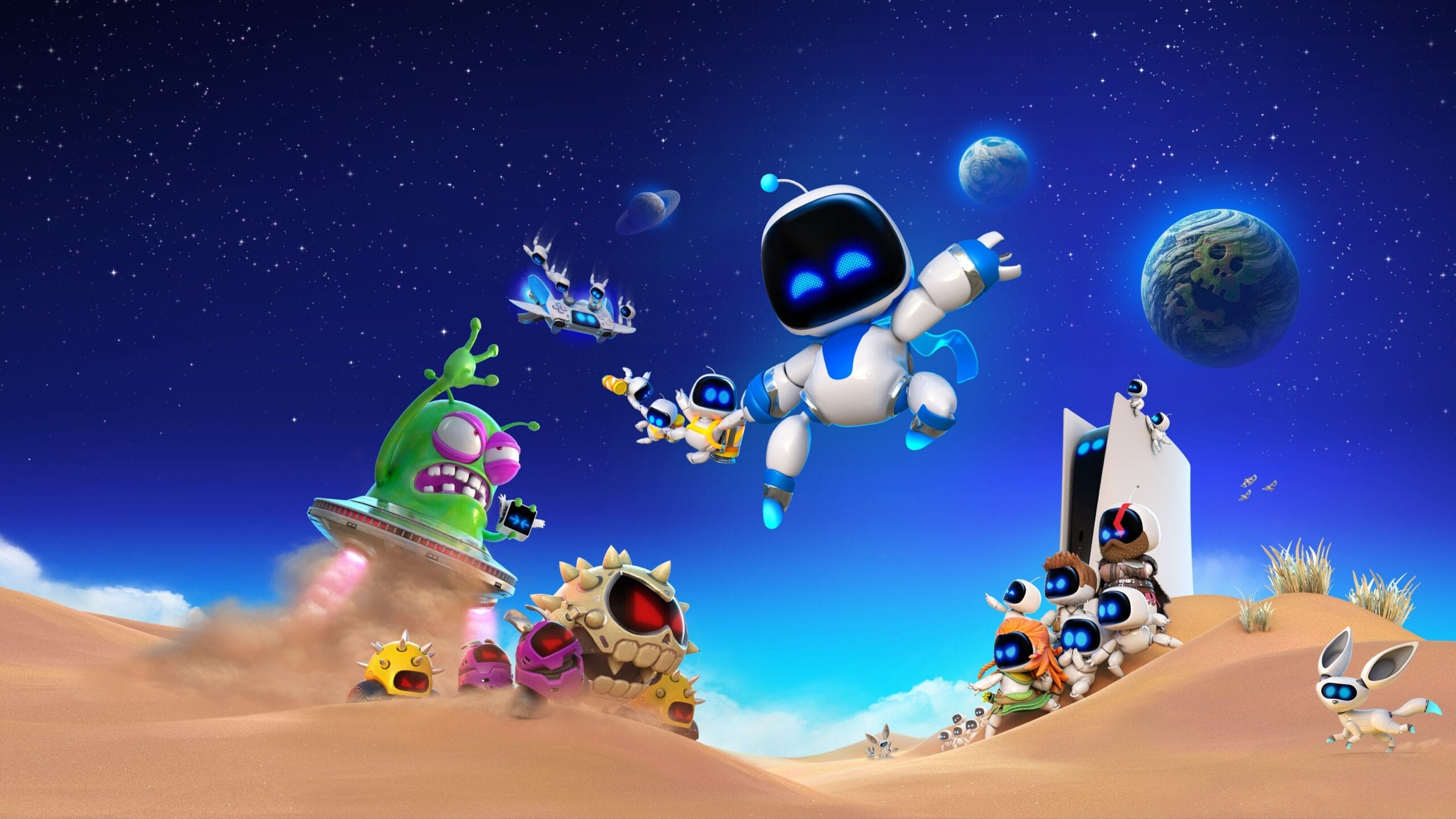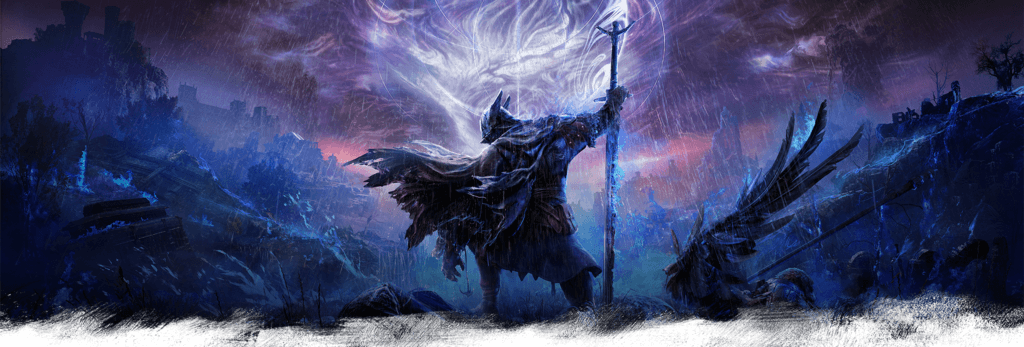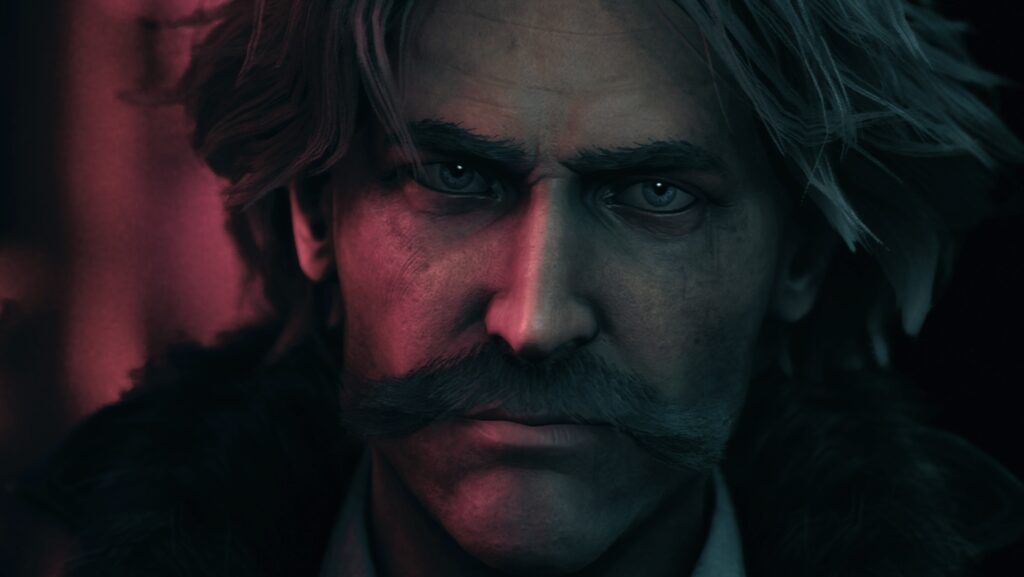What would a particularly scintillating piece of action gameplay, a poignant cutscene or a triumphant victory sequence be like without the staccato guitar riffs, soaring melodies, crashing drums and massive crescendos? They wouldn’t be half as scintillating, poignant or triumphant, for sure.
Welcome to the inaugural edition of Drop C++, a series about the people who put the music into your favourite (and not-so-favoured) games. Over the course of discussions with a variety of musicians, composers and sound designers, this set of articles will seek to shed some light on how the music comes together, the people who make it, what inspires them and more. So without further ado, let’s get right into Volume One.

“PC games in the late ‘90s are kind of my happy place, where you’ll find some of my favourite experiences. I’ve got a big soft spot for the original Deus Ex and a large part of that is the music. It was probably the first game I played where I was very aware of the fact that the music was a big part of the experience. Sure, music is never more important than gameplay. It’s got to be a good game at the end of the day. And Deus Ex at the time was a phenomenal game,” says Kenny Young, setting the tone for a very entertaining and deeply insightful video call.
The Scottish composer, sound designer and audio director (with numerous awards and nominations under his belt) is a relaxed man these days. Astro Bot, the latest project on which he worked, is out in the wild, breaking sales records across the world and redefining people’s preconceptions about 3D platformers on PlayStation consoles. And the game’s varied and multi-textured original soundtrack launched just a few days ago across streaming platforms. “I am actually still just finishing up on Astro Bot — I’ve got the equivalent of an audio admin to do,” he tells me, “So I’m contractually obliged to deliver all music in a Stem1 format.”
Why do these exist, you may well ask, especially if you’ve already handed over the masters? “Once you’ve delivered music after shipping the game, you then go through this archival process in case someone wants to revisit it in the future,” Kenny explains, “[The studio] probably won’t need it, but if you don’t do it now, it’s something that you might not necessarily be able to go back and create in the future, because technology changes.”
On family-friendly gaming
This year marks 20 years since Kenny kicked off his career as a sound designer at Sony London Studio, where he worked on such projects as The Getaway: Black Monday, 24: The Game and Heavenly Sword. In the time since, he’s worked on titles like LittleBigPlanet, Dreams, Astro Bot Rescue Mission, Astro’s Playroom and of course, Astro Bot. “If you’d asked me when I was younger, ‘Do you want to work in family-friendly stuff?’, I would have said, ‘No, I want to do violent games, driving and shooting ones’. And the thing is, I did those at London Studio.”
The Getaway: Black Monday and Gangs of London are a couple of examples of action games — that include healthy amounts of driving and shooting, and are pulled together by a strong story — on which he worked. “I enjoyed working on them, but there is a downside to those projects, which is some of the dark stuff isn’t necessarily very pleasant to work on,” Kenny admits, adding, “Although I certainly enjoyed working on the more narrative-led stuff and simply because story is such a rich inspiration for the creative process when you’ve got drama and characters.”
His work on family-friendly games, however, is expectedly quite different in nature, primarily because narrative is not what these games are about — their clear focus is fun. “With Astro Bot, obviously, it’s platforming, it feels really great, and it’s an engaging experience for players of all ages. With LittleBigPlanet, it was all of that, plus you had the creative toolset,” he elaborates, “You get to really experiment a lot more with such games, which I enjoy, but I think that’s harder work, because you’re doing more work to achieve the end result.”
Noting that it would be nice to work on some narrative stuff again because he doesn’t really get to flex that muscle anymore, Kenny admits that his success in the world of family-friendly games is a double-edged sword. “On the one hand, you’ve got the experience and reputation, and this brings you work, but the flip side is essentially that you are typecast,” he says and laughs, “Not that I’m upset with where my career is. It’s a privilege to get to work on stuff that is high-profile and finds an audience. You know, that’s all anyone wants really.”
He goes on to point out that he, like most music composers, is a freelancer, adding, “I don’t think anyone’s going to come to me and say, ‘Hey, Kenny, love your work on Astro Bot. Do you fancy doing this AAA, story-led game?’. It’s not going to happen. So it would be down to me to take some risks and find a smaller project [if I want to pursue a different sort of game]. But yeah, we’ll see what happens.”
I take this opportunity to delve a bit deeper into the differences between the approaches to family-friendly and narrative-driven titles, and the sort of no-go areas he’d encounter in a family-friendly game. “Weirdly enough, and maybe this has a lot to do with my personality type, it’s probably the opposite of what you would think, because some of the ‘no-go areas’ are so clear that I never even get close to violating them,” says Kenny, “If anything, I think the challenge is not going the other way. I mean, it’s very easy to write music for a family-friendly game that ends up sounding way too kiddy and saccharine — like sickly sweet.”
Underlining the fact that if you make the mistake of trying to write for kids, you end up just doing ‘twee bullshit’ as he puts it, Kenny notes that therein lies the skill of striking the balance between something that is safe, but not childish. “You have to be mindful of the audience and sure, really young kids (up to the ages of five or six) would like it, but if it’s too childish, it actually ends up putting off large segments of your audience. I also think that would actually put older kids off the game too. And then once they get to be teenagers, then they wouldn’t even touch a family-friendly game.”

The method
I’m always fascinated by how visuals elicit music in the minds of those tasked with composing a musical score or soundtrack. For some, it’s the mood or vibe that drives the music, for others, it’s the gameplay that dictates the musical tone and for the rest, it’s a combination of things. “Aspects of the process are dictated by the client in so far as obviously every relationship is slightly different,” Kenny offers, “But I really like to have a build of the game to play if I can, just to sanity check the information I’m being given.”
You’d be forgiven for thinking that’s the status quo. Hell, I always assumed that was the way, but not for the first time in this conversation, my preconceived notions have been corrected. “It’s not that uncommon for composers working in games just to have reference videos and not to have a build of the game to play. And there’s a bunch of reasons for that,” the composer explains, “Partly, it’s because composers are third-party collaborators who are generally remote workers, and not usually employed as part of the development studio. And then there’s confidentiality issues, like working with Sony and working with PlayStation 5. Maybe because I’ve worked with and for Sony for so much of my career, I was lucky enough to get a dev kit [for Astro’s Playroom and Astro Bot], so I can actually play builds of the game.”
Kenny, who is a founding volunteer of the Audio Mentoring Project and sits on the Game Developers Conference advisory board, adds, “It all starts with a conversation with the client.” Then the client usually walks the music composer through a level, with the former playing it and discussing their thoughts, talking about the gameplay, what they want, how it should feel to the player and so on. “And I’m soaking all this in, and then I’ll some ideas of my own, and we’ll discuss those at this point,” he continues, “I’ll ask, ‘So would something like this work?’ and then you judge their response to that query.”
Unsurprisingly, there are different ways of working with clients. In some cases, the composer will find themselves working with an audio director who has already done a fair bit of R&D into the music, and can provide a really tight brief with musical references. They usually won’t ask you to pastiche. Instead, you’ll be asked to create a ‘vibe’ and be told that this bit of music or these instruments feel appropriate for a certain character or setting, and that gets the conversation going about what works and what doesn’t.
“Written briefs can be grossly misleading because a lot of these things are subjective. I’m a conceptual thinker, so I really respond well to ideas, and not just things like, ‘Oh, I like this bit of music’ or ‘That seems to work’,” Kenny says, “The question for me is why does it work? And so I’m always asking questions, but sometimes people don’t have those answers because if you’re working with non-musicians, they don’t always necessarily understand why something works. They just know that it works.”
In this scenario, what often tends to work is a reference track, particularly when the client isn’t especially musically articulate. “If I can play the game and I’ve got a reference track, I can make sense of it, but a lot of composers don’t like that,” he reveals, “Really what composers don’t like is being told is to emulate something. That’s just horrible, because it’s very hard to be original and bring yourself to the table when you’re being asked to copy something.”
Astro’s world
“If you look at something like Astro’s display (his face), it’s made up of a matrix of LEDs, and that to me is quite a retro display, because it’s got a kind of 1980s toy-like look to it. I figured it was a big part of the character’s identity — the most expressive part of their identity,” recalls Kenny about his process of getting the music for the Astro Bot games just right, “There’s an organic human quality to that, which is really important for making the world feel like a welcoming place.” He figured early in the process that it would’ve been quite easy to go down the digital side, which would have taken him and Astro down a more futuristic and sci-fi route.
“That is part of the project’s aesthetic, but it doesn’t lean into it in a hardcore way,” he reasons, “The problem with digital is that it can be quite cold and clinical, and so for the most part, I don’t actually stick to it. There’s a few small things I do, for instance, there’s a technique called stutter edits which is best explained as when a CD skips — you get that little glitch repetition, but using that in a musical way, in a rhythmical way. So that’s an example of a digital touch. I feel the world of Astro is actually more contemporary, almost a reflection of today rather than futuristic, and it seemed toy-like and kind of analogue to me. And so that’s the ideas we started to play with in the first game (2016’s Astro Bot Rescue Mission).” Astro’s Playroom took things to a new level because it worked on what Kenny refers to as a ‘really high-level concept’, which is that the game takes place ‘inside’ your PlayStation 5 console. And this was what informed such ideas as writing the song I’m Your GPU. If you’ve never heard/heard of this song, you owe it to yourself to check it out below.
Exploring the idea of a relationship between players and their hardware — a theme of Astro’s Playroom, a game that celebrates the various eras of the PlayStation with recreations of all the old consoles — was the basis for Kenny’s second tryst with Astro and his world. “It was all quite different and experimental in nature, because there’s no point of reference for that kind of thing. You have to try some stuff out and see what works. And I’ll credit game director Nicolas Doucet on that one,” says Kenny. And now here’s the song:
Among the most interesting things about Astro’s Playroom was the safety net of sorts that it provided the development team by shipping as a pre-installed game on PlayStation 5 consoles. “The nice thing about working on a game that’s going to be free and already installed on every single PlayStation 5 is that because people haven’t paid for it, their expectations are actually really low and that frees us up to experiment and take risks that you really would be a bit too scared to take in a paid game,” he says candidly, “If you’re going to take risks, do it on the one where people’s expectations are low.”
A few years later, Astro Bot would launch. With a price tag of Rs 3,999 in India and $59.99 Stateside. And this time, expectations were sky-high. But the main challenge Kenny faced on his part was the sheer breadth of all the different kinds of musical genres that he had to write in, in order to back up all those different gameplay mechanics. Describing Astro Bot as ‘a diverse toy box of stuff’, he admits that he had to work with genres that weren’t necessarily in his comfort zone. “There’s the jazzy track on the mouse level (Downsize Surprise) that a lot of people really like. That’s not in my wheelhouse. I’m not a jazz musician, so I certainly wouldn’t be able to do that quickly,” he says, “It needs to be acknowledged that every composer has limitations, so it was quite challenging, but on the plus side, it keeps things interesting, right?”
Speaking of interesting, among the bits of fan service (and there are a whole lot of those in Astro Bot) that were widely appreciated by players were the levels that paid homage to the Uncharted, God of War and Horizon series. I must’ve played them again at least a few times each, because I was so enamoured by the details that went into reimagining those worlds in Astro Bot form. But the experience would’ve been nowhere near as fulfilling had it not been for the music. “Those were probably the highlight of the project for me,” says Kenny, “It was just a privilege to get my hands on the music.”
“I was given the stem files, so I was able to pull out the different instruments that are in there. That in and of itself was fun — it was just ‘music nerd fun’ to dig through that stuff and understand a bit about how those composers work and structure their tracks,” he says with glee, adding, “And then to actually get in there, cut it up and get playful with it. The analogy I’ve been using to describe the process to people is that it’s a bit like getting a finished jigsaw puzzle, and then breaking it up and jamming bits together that weren’t quite designed to do that, but if you experiment enough, you eventually you get something that looks interesting and becomes a little musical motif that you can play with and reuse.”
Underlining the fact that it was important to maintain aspects of the main themes for fans, to ensure they would hear and recognise them, he points out that the first of these themes that he played around with was Bear McCreary’s God of War theme. “My first attempt was to convert all the parts that were transcribed to synthesisers, and add the drum beat over it — it still retained so much of the original vibe of the original tracks that it just didn’t fit, it was too serious,” Kenny says, “So I had to just get a bit more playful with it. And I think the audience can hear the fun that I’m having with it and while they’re obviously not thinking of me while they’re listening to it, they’re having a good time. I think that’s the best compliment really. The players aren’t screaming, ‘What have you done?!’ They can hear that the source material has been treated with respect, while we’ve also had fun with it.”
Mozart for me is really too sickly sweet. His music is too happy and I don’t really like to play it or listen to it, but I absolutely love Bach.
Kenny young
Quite what the original composers make of his handiwork is as-yet-unknown, he says, pointing out that the ones that have spoken to him have been very nice. “But you can never tell if people are just being friendly,” he laughs. After God of War set a template, Kenny was ready to move onto the Uncharted and Horizon themes. “The God of War one, even though it was the first one, was actually the easiest because the core of the theme is only three notes and then obviously it develops a bit from there,” he elucidates, “The Horizon and Uncharted ones are much longer themes, they’re big sprawling ones that kind of go on and on — I don’t mean that in a bad way, it’s just the nature of what they are.”
This, unfortunately, doesn’t lend itself to making a track easy to cut, because once you cut it, it becomes unrecognisable. “So that’s why those tracks have a lot more. They retain the theme that’s there, but then the stuff that’s underneath is me having fun,” he says, “If you listen at the beginning of the Horizon track, you can hear that I’ve cut up the vocal part and looped it and done all sorts of things to it.” Check it out for yourselves:
Early days
“Growing up, my main instrument was the violin, and so I studied Bach, Beethoven, Mozart, Smetana and all this violin repertoire; a lot of it didn’t really connect with, but the thing I loved the most was always the Baroque stuff,” says Edinburgh-born Kenny when I ask him to list his biggest musical inspirations, “I love a good tune but going back to what I was talking about earlier, Mozart for me is really too sickly sweet. His music is too happy and I don’t really like to play it or listen to it, but I absolutely love Bach.”
Describing the latter’s music as ‘structured’ and ‘mathematical in a way’, he compares it to the musical equivalent of a cathedral where you can see the maths (in this case, geometry) of a cathedral as you gaze upon the architecture. “And then, I also studied traditional Scottish music — folk music — and I think the best player for me was always a chap called Alasdair Fraser,” Kenny says, “And I’d seen him live many times, so I’ve got a lot of happy memories enjoying those performances, but also going with my mum and dad when I was younger.”
Then there’s the one that’s considerably more left field. “I’m not sure if you’re familiar with Dr Hook,” he tells me, “But, it’s a 1970s novelty band who write the sort of racy tongue-in-cheek stuff that you can’t really do anymore. The modern equivalent would probably be something like Flight of the Conchords, and the thing I like about Dr Hook is that you can’t really tell if they’re being serious or not.” On a side note, the song below actually appeared in the film Almost Famous.
“I kind of stopped listening to new music when I was a student,” he admits, “These days, apart from music with which I’m pretty familiar, I’ll listen to my own music in the car to check if the mix is good. Other than that, I’ll listen to the stuff that my kids are listening to… which is terrible.” While Kenny grew up as a musical kid, he arrived at a point where he realised that being a performer was not something he wanted to do. And when he came to that realisation, he started working creatively with sound, with an eye on becoming a sound engineer. And it was around the time that he went from being a musician to being a sound designer, that he stopped playing or listening to music.
“It was only when I began working in games that I actually got back into music and started writing it,” he says, “It’s kind of mad because people assume that as a composer, you must be obsessed with music and listening to all kinds of stuff. And I end up having to explain that on one hand, I have a genuine love of retro aesthetics, and on the other, my musical tastes haven’t kept up with whatever’s going on in the world these days.”
Wait, why would you not want to be a musician? “I just didn’t enjoy it,” he laughs before explaining, “I enjoyed playing and making music with other people, but once there was an audience involved, as a perfectionist to some degree, I was never happy with my playing. I knew what was required to fix that, but that just meant a bunch more hard work that I wasn’t prepared to do. I guess I wasn’t comfortable with making a mistake in front of people.”
As our conversation draws to a close, I begin to wonder what Kenny likes most about music these days. “I’m a child of the ‘80s and ‘90s, and as I’d mentioned, I love retro aesthetics — which means old sounds not just from my childhood, but anything from the ‘40s, ‘50s, ‘60s and ‘70s. They’ve all got unique sounds and aesthetics,” he says, “In terms of music production, I love the challenge of trying to recreate those sounds because while it’s difficult to do, it also ties into concepts like nostalgia, which was big in LittleBigPlanet, and it’s something we drew on in Astro Bot as well.”
After a wonderful chat spanning Kenny’s career moves, inspirations, dislikes and more, it’s time to find out what’s next for him and eventually let him let the man get back to finishing up on Astro Bot and find out what’s next. “Well, I’m still putting all the stem files together. There’s no deadline for that, but it’s just one of those things that I’m slowly working through,’ he says, adding, “I’m in a privileged position where I can afford not to work for a few months, and that’s good because there are no offers on the table. But that’s the freelance life: Stuff just appears out of thin air. And yeah, as long as it’s creatively inspiring, I don’t mind what it is.”
A version of this article originally appeared on The Qun


